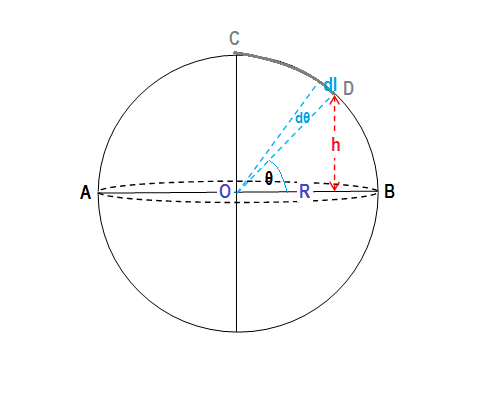A chain of mass m and length l lies on the surface of a rough sphere of radius R (>l) such that one end of chain is at the top most point of sphere. The chain is held at rest because of friction. What is the gravitational potential energy of the chain?
considering the horizontal diameter of sphere as reference level for gravitational potential energy
considering the horizontal diameter of sphere as reference level for gravitational potential energy
1 Answer

Let the chain of mass
Let the point
Let the height
So
Now let us consider a ifinitesimally small chain length
So
The mass of
Now the PE of the small chain length residing at height
Integrating we get the total PE of the chain as

